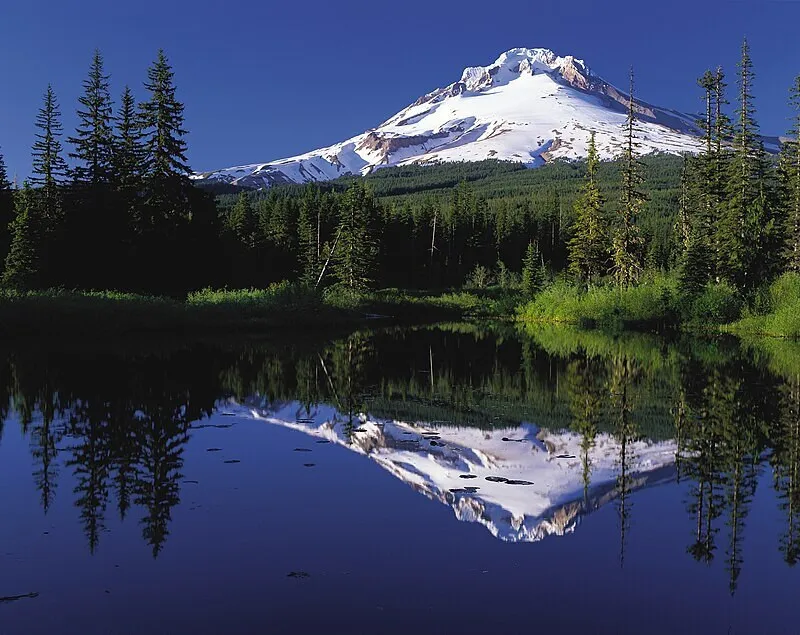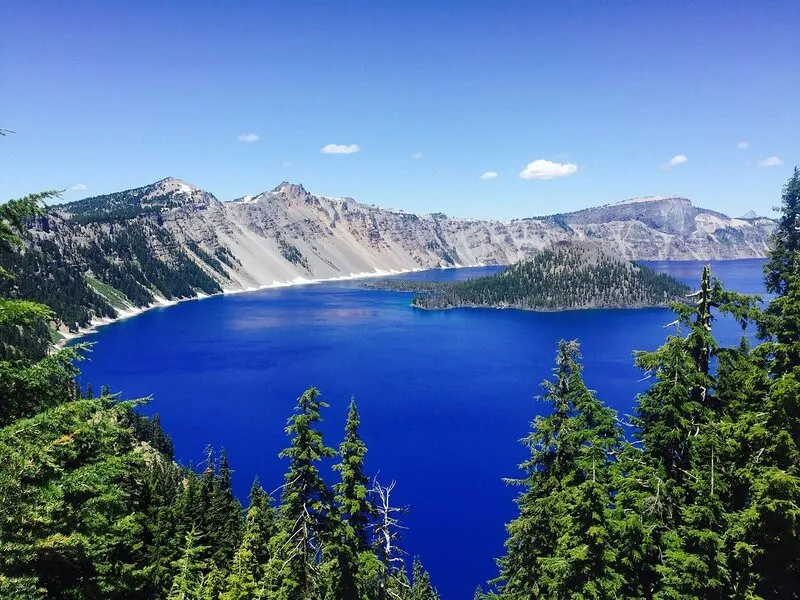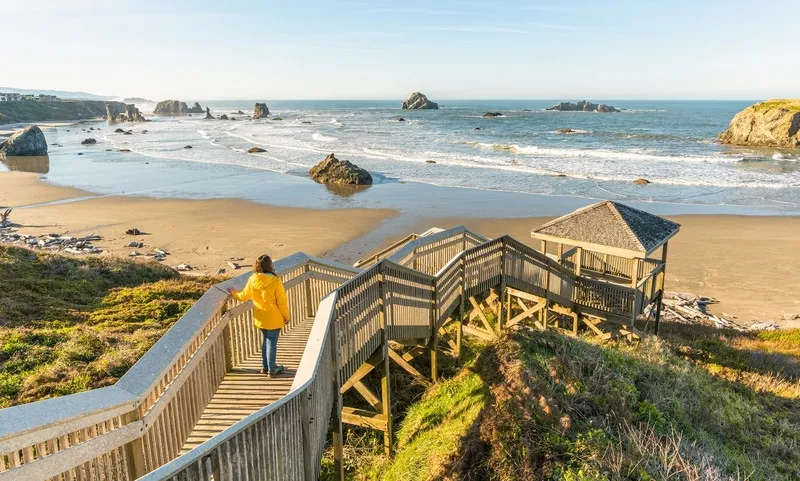Oregon, renowned for its breathtaking natural beauty that stretches from the Pacific Coast to the snow-covered Cascade Mountains, is a dream destination for adventure enthusiasts. While summer in Oregon offers vibrant outdoor activities, winter unveils a unique, tranquil, and mesmerizing charm. Have you ever dreamed of camping amidst a snowy landscape, breathing in crisp mountain air, and embracing the absolute serenity of Oregon’s wilderness in winter? If the answer is yes, this guide will help you plan the perfect and unforgettable winter camping trip in Oregon.
The Unique Appeal of Winter Camping in Oregon
Winter camping is more than just a vacation—it’s an opportunity to challenge yourself and discover new horizons. Oregon transforms into a magical snow-covered wonderland during winter, with forests, mountains, and coastal areas resembling scenes from a fairytale. Unlike the bustling summer crowds, winter camping offers a peaceful escape, allowing you to immerse yourself in nature and disconnect from the noise of city life.

Furthermore, winter camping in Oregon offers the chance to enjoy season-specific activities like snowshoeing, cross-country skiing, stargazing under clear skies, and savoring hot meals in the coziness of your tent. It’s an exceptional opportunity to experience untouched nature, explore personal limits, and create cherished memories.
Best Winter Camping Destinations in Oregon
Oregon boasts countless beautiful camping locations, but not all are equally suitable for winter conditions. Below are some recommended winter camping destinations sorted by different types of experiences:
1. Accessible Snow Camping: Mount Hood Area
The Mount Hood area is one of Oregon’s most popular winter camping destinations, thanks to its proximity to Portland, well-developed infrastructure, and stunning alpine scenery.
- Trillium Lake Sno-Park: Ideal for winter camping beginners, Trillium Lake Sno-Park provides restroom facilities, parking, and easy access to a frozen Trillium Lake where you can enjoy snowshoeing or skiing.

- White River Sno-Park: Situated east of Mount Hood, White River Sno-Park offers options for car camping or tent camping. It’s well-known for its cross-country skiing and snowshoe trails.
2. Wilderness Winter Camping: Deschutes National Forest
For those seeking solitude and a wilder camping experience, Deschutes National Forest in Central Oregon delivers seclusion and pristine landscapes.
- Waldo Lake Area: Waldo Lake, one of the cleanest lakes in the world, becomes a snowy paradise in winter. Several trails around the lake offer numerous spots for wilderness camping (ensure to check road conditions and acquire necessary permits).

- Deschutes River: The upper reaches of the Deschutes River provide excellent wild camping opportunities. Pitch a tent beside the frozen river and enjoy the tranquil sound of water trickling through ice.
3. Coastal Winter Camping: Oregon Coast
Although devoid of snow, the Oregon Coast offers unique winter camping experiences filled with raw beauty, dramatic cliffs, and roaring waves.
- Cape Lookout State Park: This park features campsites overlooking the Pacific Ocean, offering incredible storm-watching and coastal serenity away from the usual crowds.

- Cannon Beach: While bustling in summer, Cannon Beach becomes quieter in winter. Nearby campgrounds make it easy to access the iconic Haystack Rock amidst a winter coastal atmosphere.
Essential Gear for Safe and Comfortable Winter Camping in Oregon
Winter camping requires more thorough preparation compared to summer outings, especially regarding gear and survival skills. Below is a list of must-have items and tips to ensure a safe and enjoyable winter camping trip in Oregon:
1. Specialized Winter Tent
The tent is your mobile home during camping trips, and choosing the right tent for winter is crucial.
- Four-season tent: Opt for a four-season tent designed to withstand high winds, snow accumulation, and offer superior insulation.
- Appropriate size: Choose a tent that fits your group comfortably while minimizing unused space, as smaller tents retain heat better.
- Ease of setup: Practice setting up and dismantling your tent ahead of time to ensure quick and easy assembly in freezing conditions.
2. Extreme Warm Sleeping Bag
Staying warm overnight is vital for a good rest and maintaining good health during winter camping.
- Temperature rating: Select a sleeping bag rated for temperatures lower than the forecasted nighttime lows. For instance, if temperatures are expected to drop to 14°F (-10°C), choose a sleeping bag rated for 5°F (-15°C) or lower.
- Down or synthetic fill: Down sleeping bags are lightweight and warm but lose insulating properties when wet. Synthetic bags retain warmth better in wet conditions but are bulkier and heavier.
- Sleeping bag liner: Adding a liner can increase warmth and keep your sleeping bag cleaner.
3. Insulated Sleeping Pad
A sleeping pad provides both comfort and a barrier against the cold ground.
- Foam or air pad: Foam pads are durable and insulating, while air pads are more compact but prone to punctures.
- R-value: Choose a sleeping pad with an R-value of 4 or higher for winter insulation.
4. Layered Winter Clothing
Layering is the key to staying warm and comfortable in varying winter conditions.
- Base layer: Wear moisture-wicking materials like merino wool or synthetic fabric against your skin.
- Middle layer: Insulating fleece jackets or down coats provide the main source of warmth.
- Outer shell: Waterproof and windproof jackets and pants protect against wet and windy conditions.
- Accessories: Don’t forget beanies, gloves, scarves, thick wool socks, and waterproof boots.
5. Winter Cooking Equipment
Warm meals and drinks are essential for energy and maintaining body heat.
- Portable gas stove: Quick and reliable for boiling water or cooking in cold weather. Bring extra fuel.
- Cookware: Compact pots, pans, cutlery, and utensils that can endure freezing temperatures.
- Thermos: Preserves hot beverages for extended periods.
- High-energy food: Pack lightweight and nutrient-dense food such as dried fruits, nuts, instant meals, and chocolate.
6. Safety and Survival Gear
- First aid kit: Comprehensive supplies for potential injuries or emergencies.
- Headlamp with extra batteries: For visibility in dark conditions.
- Compass and map: Essential for navigation in remote areas.
- Survival tools: A multi-tool or folding knife for various tasks.
- Waterproof matches or lighter: For fire starting in wet conditions.
- Whistle: To signal help if needed.
- Snow shovel: Useful for clearing a campsite or creating windbreaks.
- Trekking poles: For easier navigation across snowy or slippery terrain.
- Sunscreen and sunglasses: Protect against snow glare and UV exposure.
Winter Camping Tips for Success
Follow these practical tips to ensure your Oregon winter camping trip is safe and memorable:
1. Check the Weather Forecast
Always monitor weather updates before and during your trip. Winter weather in Oregon can be unpredictable, making this step vital.
2. Arrive Early & Choose a Suitable Campsite
Arrive early to set up camp and prepare before darkness falls. Pick a flat and safe spot away from low-lying areas or beneath large trees with snow accumulation.
3. Keep Your Tent Warm
- Use insulating ground covers: Prevent cold infiltration from the ground.
- Seal the tent: Close vents during extreme cold to retain heat.
- Heat water bottles: Place hot water bottles inside the tent for added warmth (avoid using gas heaters in enclosed spaces).
- Body heat: Sharing a tent with others can significantly boost warmth.
4. Manage Moisture Effectively
Minimize the negative effects of dampness, which can decrease warmth.
- Ventilate regularly: Reduce condensation inside the tent.
- Change damp clothes immediately: Always keep your clothing dry.
- Use a liner: Protect your sleeping bag from moisture.
5. Practice Food and Water Safety
- Store food securely: Prevent wildlife from accessing supplies.
- Boil water: Ensure drinking water is safe.
- Avoid leftover food inside the tent: It could attract wildlife.
6. Follow Leave No Trace Principles
- Dispose of trash responsibly: Pack out all waste.
- Avoid polluting water sources: Conduct washing and hygiene activities away from water bodies.
- Respect nature and wildlife: Keep noise to a minimum and avoid disturbing animals.
Final Thoughts
Winter camping in Oregon offers a unique challenge and an unmatched opportunity to experience the serene beauty of nature. With proper preparation, gear, and knowledge, you can enjoy a safe, warm, and unforgettable adventure in this stunning state. Start planning today and get ready to create cherished memories amidst Oregon’s snowy wilderness!